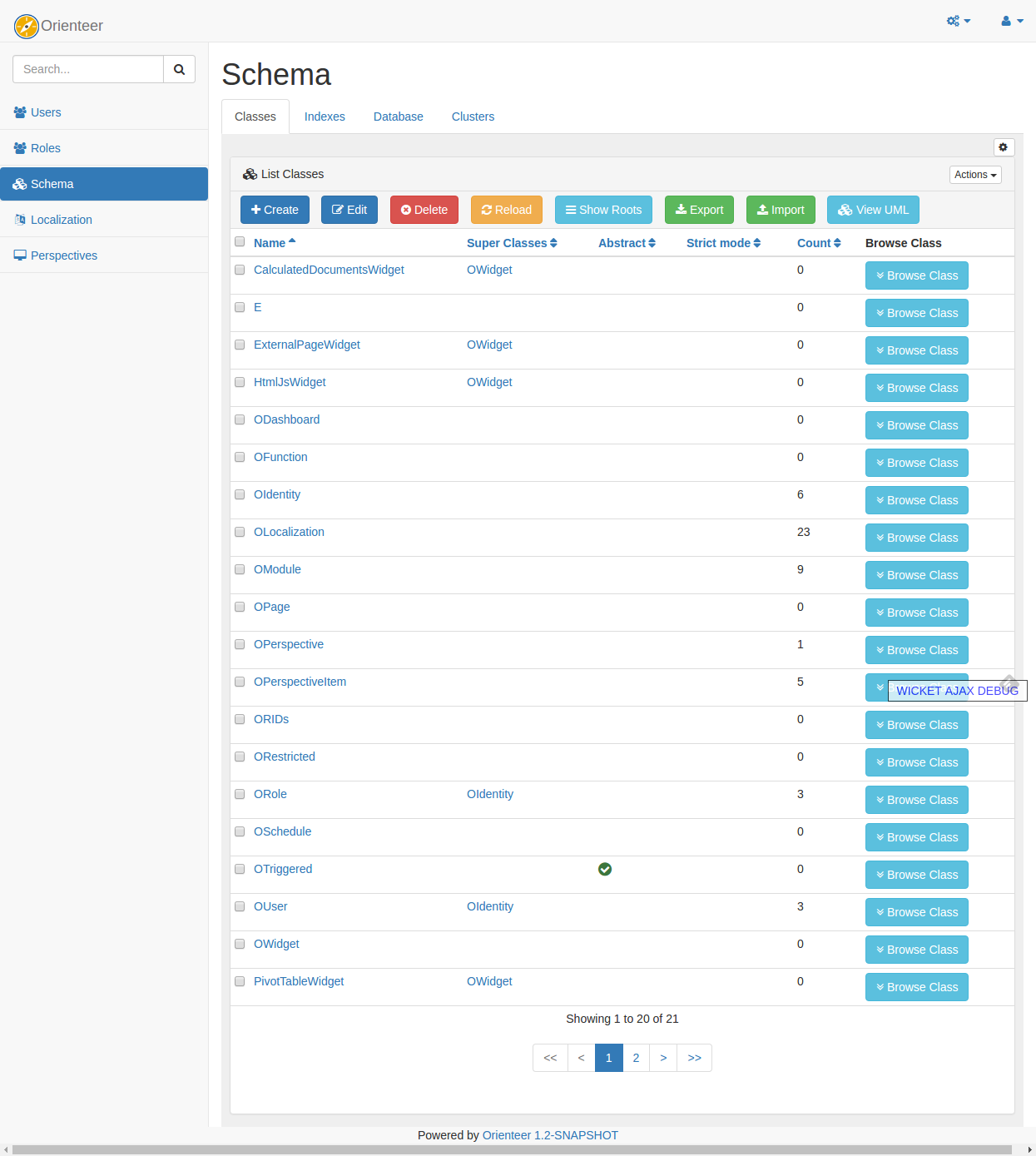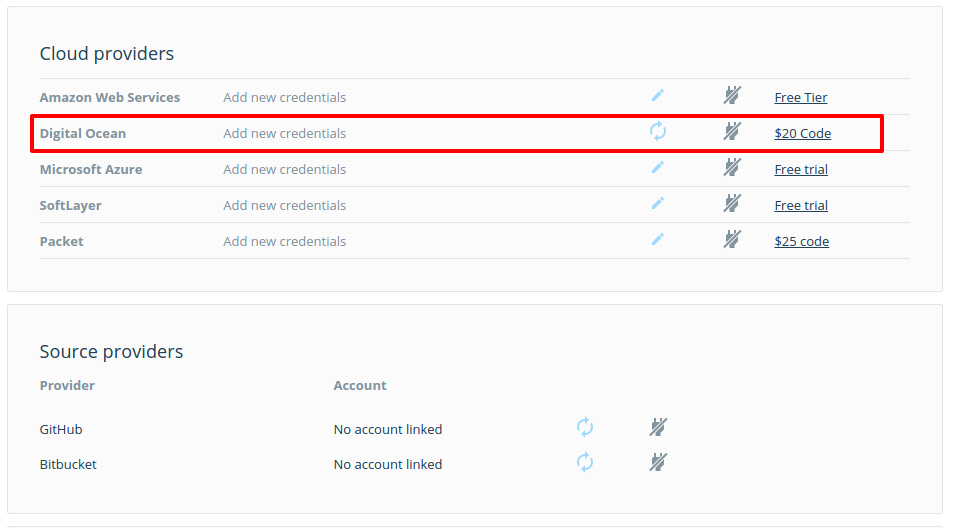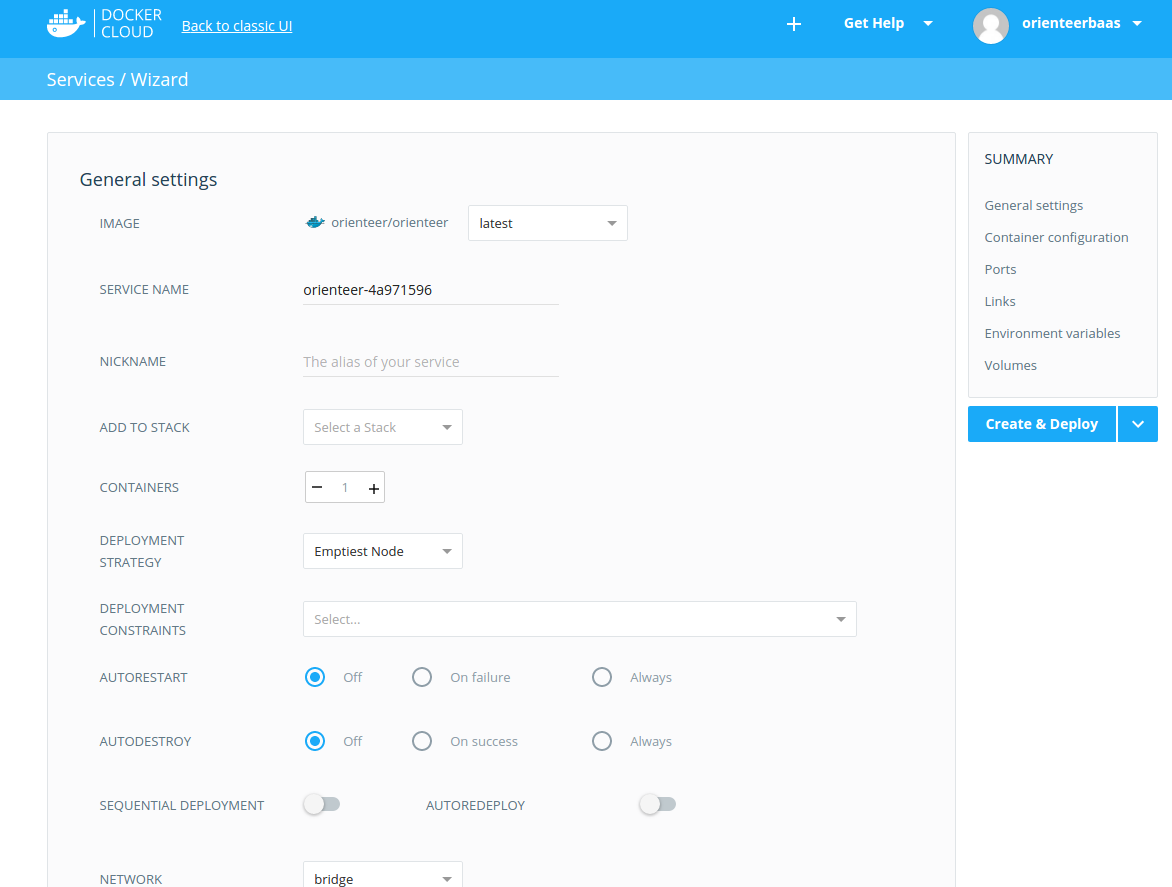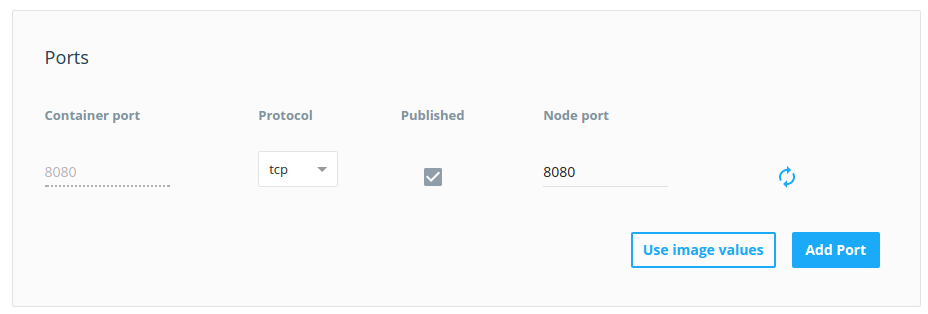Own BaaS c subject area modeling, scripts and more for half an hour
Today we will tell and show how to raise your Backend as a Service (BaaS) with very interesting features in half an hour.

BaaS is a web application that runs in the cloud and provides everything you need for business / mobile applications and websites (front-end). BaaS allows at least:
')
Here , the respected yurash collected the main BaaS-systems for 2012. Now there are much more of them, but in terms of questions that people ask about BaaS platforms, the article is relevant. By the way, if you are interested in the current BaaS market (and the BAP - business application platform), then I can share in the next article.
Here it is our plan for the next half hour
In terms of the registration procedure, Docker Cloud does not differ in any way from other services on the Internet.

To set it up, I highly recommend referring to the official documentation , and in particular to the chapter on creating your own business application (in the walkthrough format).
Settings for your specific application can be divided into the following steps:
There is no limit to perfection, so you can bring the file to infinity: by entering your widgets, your export formats, business processes, printed reports, notifications, etc. If you have questions about further customization for your needs: always happy to help!

BaaS is a web application that runs in the cloud and provides everything you need for business / mobile applications and websites (front-end). BaaS allows at least:
')
- Manage users and roles
- Simulate subject area
- Access data through REST
- Manage the data itself (database)
Here , the respected yurash collected the main BaaS-systems for 2012. Now there are much more of them, but in terms of questions that people ask about BaaS platforms, the article is relevant. By the way, if you are interested in the current BaaS market (and the BAP - business application platform), then I can share in the next article.
What we take to create BaaS
- Orienteer is an open source business application platform designer. At its core, Orienteer uses OrientDB - a NoSQL multi-paradigm database with cool features right out of the box.
- Docker Cloud is a free platform for deploying containers with Docker applications in the cloud. On Habré many articles about Docker .
Docker-Orienteer-based BaaS allows you to quickly create applications and quickly make changes to existing applications. At the same time, the system has a low threshold of entry: the simplest application can be created by a person who is not familiar with databases and programming.
The BaaS-Docker bundle can be useful to service providers, small design studios and managers of in-house data systems.
What we get in the end
- Data Model Constructor
- A wide list of data types: from primitive (INTEGER, STRING, etc.) to complex (LINK, EMBEDDED, LINKMAP, EMBEDDEDMAP), SPATIAL
- Screen Forms and Widgets for Creating Designed Objects
- User and Role Management
- JavaScript / SQL Server Scripts
- REST interface with dynamic addition / change / deletion of its functions
- Designing and Running BPMN Business Processes Based on Camunda
- Modular architecture for flexible extensions via java, if you really need
Deploy
Here it is our plan for the next half hour
- Register on Docker Cloud
- We are registering on the Digital Ocean (AWS, Azure, etc.)
- We connect Docker Cloud and Digital Ocean: we create the note
- Create and run your Orienteer service.
- Customize for yourself
Register on Docker Cloud
In terms of the registration procedure, Docker Cloud does not differ in any way from other services on the Internet.
- Go to the Docker Cloud
- We invent a Docker ID (aka username). I recommend using only the lower case with a “-” sign: if in the future you want to use Docker very closely and release your images for containers, it will be easier to address
- Set email and password
- We confirm email and that's it: you are registered!
Registration on Digital Ocean
- Go to the Digital Ocean . I recommend using this referral link , as this will give you an extra $ 10
- Registration is even easier than on Docker Cloud: set your email and password
- When registering, I recommend using Docker Cloud's promo-code, which will give you another $ 20. To get it, go to Cloud Settings on Docker Cloud. You will see something like this:

- Confirm email and that's it: you are registered
Linking Digital Ocean and Docker Cloud
- Go to the familiar Docker Cloud> Cloud Settings page (see picture above)
- In the line of Digital Ocean click on the crossed out socket
- We will authorize Digital Ocean for Docker Cloud (that is, enter the email and password of the docker)
- Is done
Create your own service Orienteer
- First of all, you need to create at least one node on which we will run our BaaS. To do this on Docker Cloud :
- Go to Node Clusters and click Create.
- Providers point choose Digital Ocean
- Specify the region
- Select the type of node. I recommend to choose with at least 1 GB of memory
- Click Create . You will see something like the image below. Docker Cloud will order, install, configure and launch the node on the Digital Ocean

- Just a little bit left: run your copy of Orienteer from the Docker image. Orienteer is a homogeneous application: it carries everything with it. Therefore, it is not necessary to create a Docker Stack. Need only the service itself.
- Go to Services and click Create.
- In the list above choose Public Services.
- In the block on the left, enter the search criteria: orienteer / orienteer
- We select orienteer / orienteer and get to this page:

- Of all the many settings, the only thing that must be configured is the ports that are accessible from the outside. For example:

- Click Create & Deploy
- We'll have to wait until the Docker image is downloaded to our node and running. It usually takes no more than 3 minutes. In the end, you will see something like the image below.

Click on the link and get to our own BaaS based on Orienteer. To log in, use the default login / password: admin / admin
Customize for yourself

To set it up, I highly recommend referring to the official documentation , and in particular to the chapter on creating your own business application (in the walkthrough format).
Settings for your specific application can be divided into the following steps:
- Create data model
- Configure role and user model
- Distribute rights to roles / users
- Add the necessary scripts executable on the server side
- Customize interface: widgets, reports, charts, perspectives, etc.
There is no limit to perfection, so you can bring the file to infinity: by entering your widgets, your export formats, business processes, printed reports, notifications, etc. If you have questions about further customization for your needs: always happy to help!
Source: https://habr.com/ru/post/312844/
All Articles